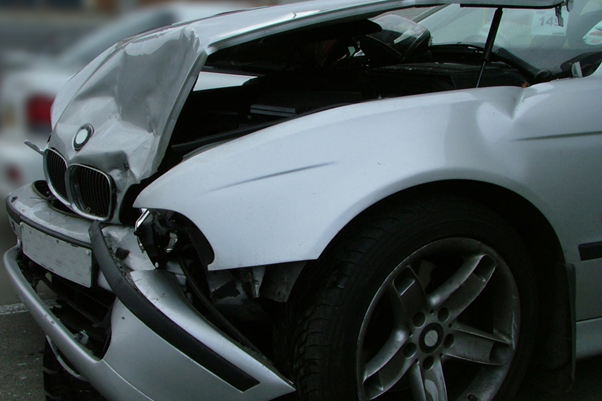
In recent years, the conversation around road safety in the United States has intensified—and with good reason. Despite the introduction of advanced safety features in modern vehicles and widespread awareness campaigns, traffic fatalities and serious injuries continue to affect thousands of lives each year. The latest car crash data provides a sobering look at what's really happening on American roads. From distracted driving to poor infrastructure, several concerning trends have emerged. These insights also play a major role in how car accident claims are processed and understood by insurers and the legal system.
The Numbers Tell a Disturbing Story
According to the National Highway Traffic Safety Administration (NHTSA), the United States saw a significant increase in motor vehicle fatalities in recent years. In 2023, over 42,000 people were killed in crashes—a number higher than pre-pandemic levels. The early data for 2024 indicates only a slight decline, suggesting that road safety remains a persistent issue.
One of the most alarming patterns is the rise in fatal accidents involving pedestrians and cyclists. In urban areas especially, fatalities among these vulnerable road users have surged. Experts attribute this to a combination of factors, including increased vehicle speed, distracted driving, and a lack of adequate pedestrian infrastructure.
Distracted Driving Still a Leading Cause
Despite years of public education campaigns warning about the dangers of distracted driving, it remains one of the top contributors to road accidents. Mobile phone use—especially texting—continues to divert drivers’ attention at crucial moments. In fact, distracted driving is involved in nearly 1 in 5 crashes resulting in injury.
But it's not just phones causing problems. Adjusting GPS devices, interacting with in-car infotainment systems, eating, and even conversing with passengers all play a role in pulling a driver’s attention away from the road.
Speeding and Aggressive Driving
Speeding has long been a leading factor in serious accidents, and the latest data suggests the trend hasn’t changed. During the COVID-19 pandemic, emptier roads encouraged many drivers to speed, and that habit seems to have persisted even as traffic volumes returned to normal.
Aggressive driving—including tailgating, improper lane changes, and running red lights—has also become more frequent. This shift in driver behavior contributes significantly to the rise in severe crashes.
Impaired Driving Continues to Kill
Driving under the influence remains a major threat to road safety. Alcohol-related fatalities make up about 30% of all traffic deaths. Additionally, there has been a growing concern about drug-impaired driving, particularly due to marijuana and prescription medications that affect a driver’s reaction time and decision-making.
As more states legalize marijuana, both for medicinal and recreational purposes, authorities are facing new challenges in detecting and preventing drug-impaired driving.
Poor Infrastructure Plays a Role
The condition of U.S. roads also plays a key role in traffic safety. Potholes, faded lane markings, poor signage, and lack of pedestrian crossings all contribute to crashes. Rural roads, in particular, are more likely to be poorly maintained and poorly lit, increasing the risk of fatal accidents.
Recent federal funding initiatives have promised infrastructure upgrades, but changes are slow to roll out, leaving many communities vulnerable in the meantime.
Who's Most at Risk?
Young drivers between the ages of 16 and 24 continue to be overrepresented in crash statistics. Their lack of experience, combined with a greater likelihood of engaging in risky behaviors like speeding and texting while driving, puts them at higher risk.
Older adults are also vulnerable, particularly due to slower reflexes and higher rates of medical complications after a crash. Meanwhile, individuals in lower-income areas are more likely to walk or bike, exposing them to greater danger due to substandard pedestrian infrastructure.
Technology Can Help—But Only So Much
Modern vehicles are equipped with a host of safety technologies like lane departure warnings, automatic emergency braking, and adaptive cruise control. While these tools are helpful, they are not substitutes for responsible driving. Additionally, not all vehicles on the road have these features, particularly older models still in operation.
There’s also concern that some drivers become too reliant on technology, assuming it will prevent accidents without any human intervention. This false sense of security can, ironically, increase the risk of a crash.
A Call for Shared Responsibility
What the latest data clearly shows is that improving road safety requires a collective effort. Policymakers must invest in better infrastructure, law enforcement must uphold safety regulations, and manufacturers must continue innovating. But above all, individual drivers must take greater responsibility behind the wheel.
From reducing speed to staying sober and alert, the smallest personal choices often have the biggest impact. And when accidents do occur, the process of handling car accident claims becomes smoother and more just when all parties are honest and informed.
Final Thoughts
Road safety is a pressing public health concern that cannot be solved with technology or policy alone. It requires a cultural shift in how we view driving—not as a right, but as a responsibility. The latest crash statistics serve as a wake-up call for everyone on the road. Whether you're a driver, cyclist, or pedestrian, staying alert, informed, and cautious could make the difference between life and death.







